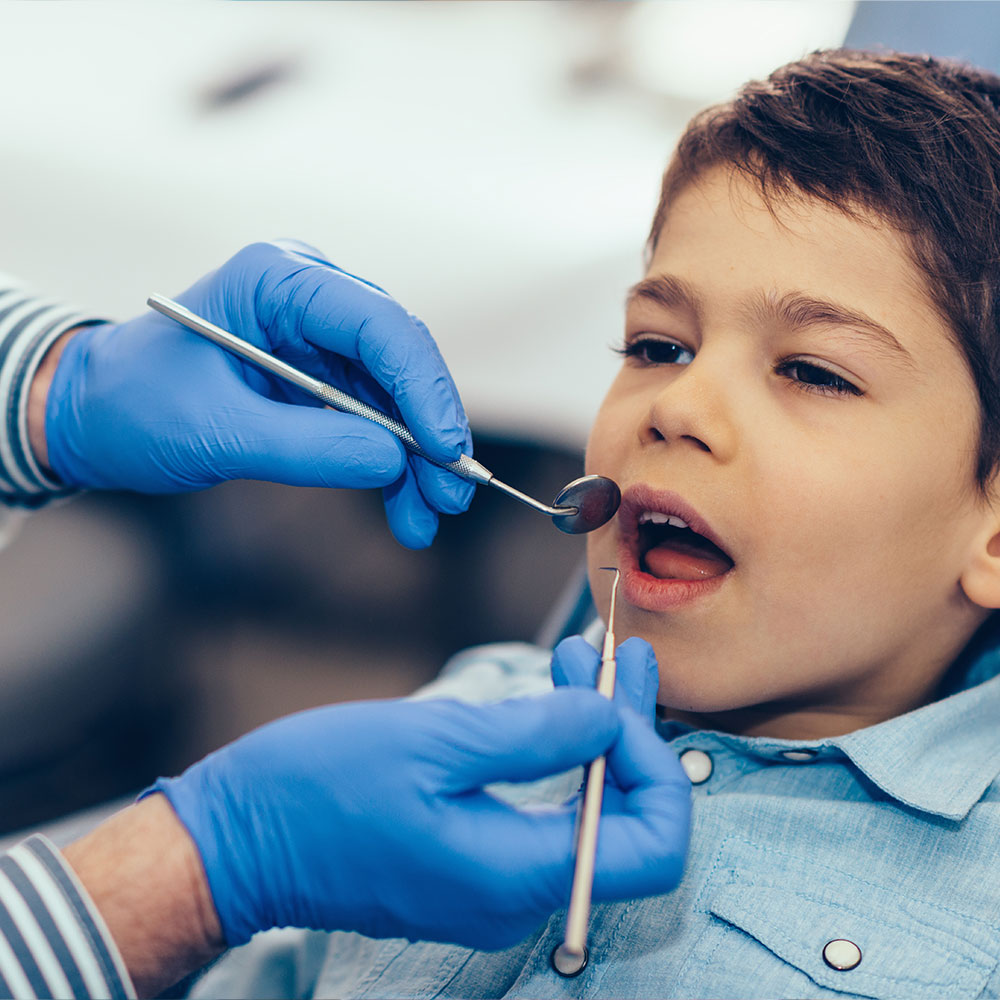White Fillings
Because the safety of our patients is our #1 concern, we use BPA-free composite fillings. These white fillings are safe for children and aesthetically appealing.


Pediatric Crowns (White Zirconia or Stainless Steel)
Stainless steel or White Zirconia crowns are sometimes recommended for children following a baby root canal or if a back baby tooth suffers from severe trauma or cavities. Because most baby molars do not fall out until the ages of 10-12, these crowns are recommended when traditional fillings are insufficient to protect the tooth from further damage until it falls out on its own. The differences between stainless steel and white crowns are mostly color preference. The pros and cons of each type of crown will be discussed with you to help you make a good decision for your child.
Baby Root Canal Therapy
A cavity involving the nerve, or pulp, of a tooth may cause excruciating pain for your child. Although the pain may be manageable using painkillers such as ibuprofen, it will keep recurring until the underlying problem is resolved. When the nerve of a child’s tooth has been infected, it must be treated to restore health to the child’s mouth.
Pediatric root canal therapy is designed to maintain the integrity of the affected tooth to prevent premature loss. The early loss of posterior (back) teeth can lead to future problems with the placement and eruption of adult teeth. To avoid the difficulties inherent with crooked or impacted adult teeth, proper root canal treatment is needed to avoid the premature loss of primary molars. Dental caries and traumatic injury are the primary reasons for pulp therapy in children. Due to the loss of tooth structure involved in teeth requiring pediatric root canal therapy, full coverage restoration such as a pediatric crown is necessary.


Bonding
A damaged front tooth sometimes requires a cosmetic filling. Fractured permanent teeth are common injuries in adolescent children and may require a simple bonding procedure similar to a filling. With a bonding procedure, however, there is no decayed matter removed during the process.
Extractions
Extractions are commonly performed on pediatric patients to address extensively decayed non-restorable teeth or orthodontic problems. To help make the procedure as comfortable as possible for your child, we may recommend the inhalation of nitrous oxide (laughing gas) and a local anesthetic. If your child is anxious, oral or IV sedation can also be offered in the comfort of our office.


Wisdom Teeth
There are many reasons why wisdom teeth may be recommended for extraction. If there is enough room in the mouth for them to come in the correct alignment there is no need for extraction; however, more often than not, this is not the case. A wisdom tooth is extracted to correct an actual problem or to prevent problems that may come up in the future.
Frenectomy
There are two general types of frenectomies: either a tongue or lip attachment frenectomy. Your child may be referred by their physician for a frenectomy consultation either as a newborn due to feeding issues or around the beginning of speaking age, approximately 3 years of age, due to speech-delay if ankyloglossia (tongue-tied) is suspected.
Your child may be recommended for a lip frenectomy if the tissue attachment of the lip extends between the two front teeth causing a gap. Typically, a lip frenectomy is done after the eruption of the upper canines because spaces in the top front teeth tend to close after the eruption of the permanent canines.

